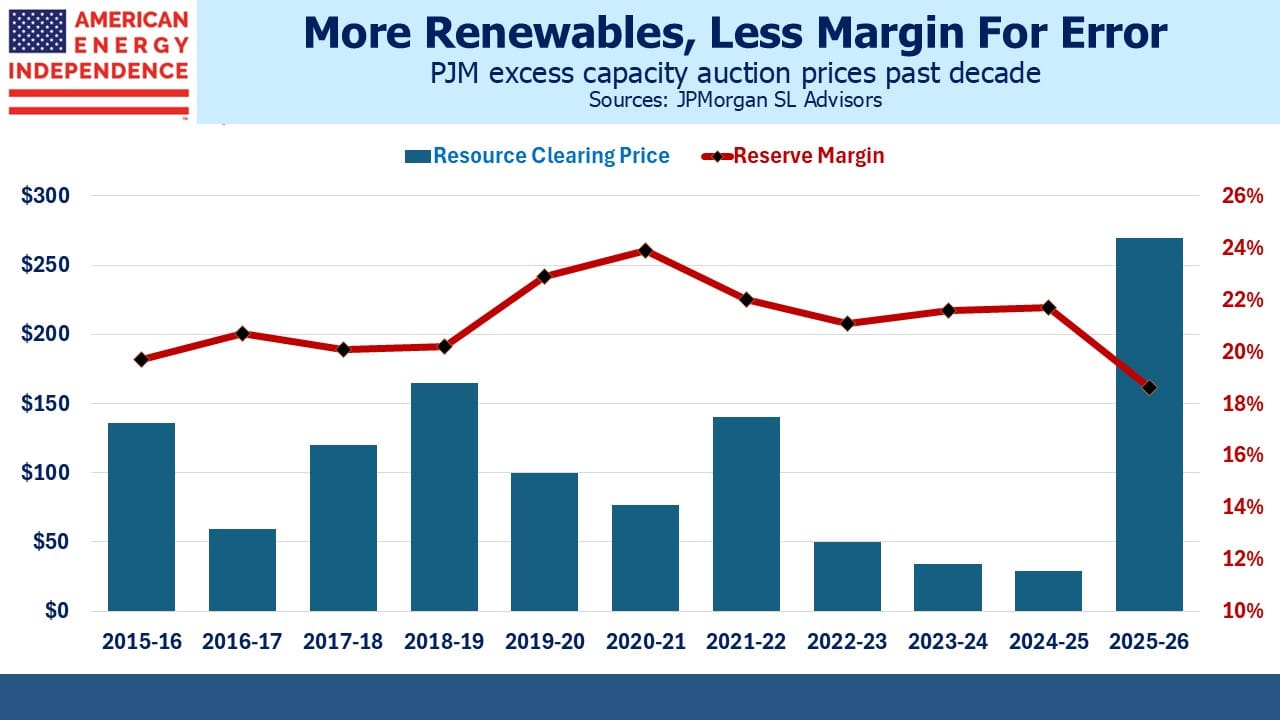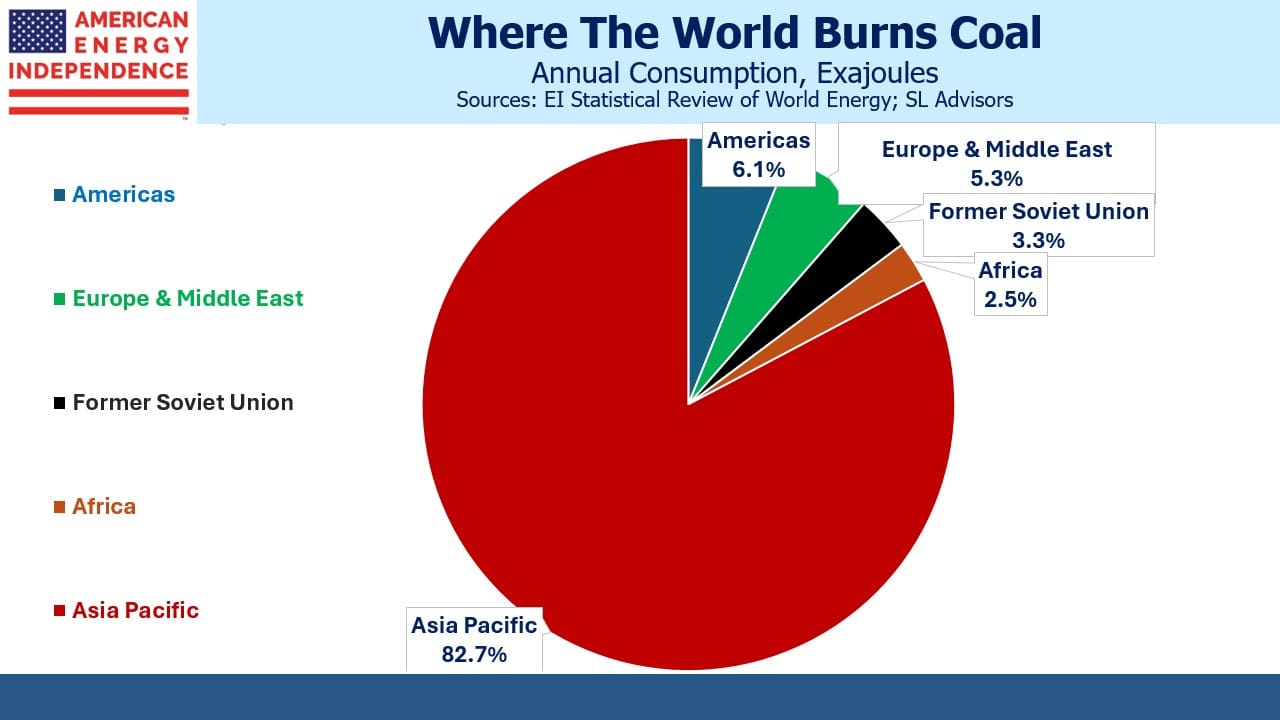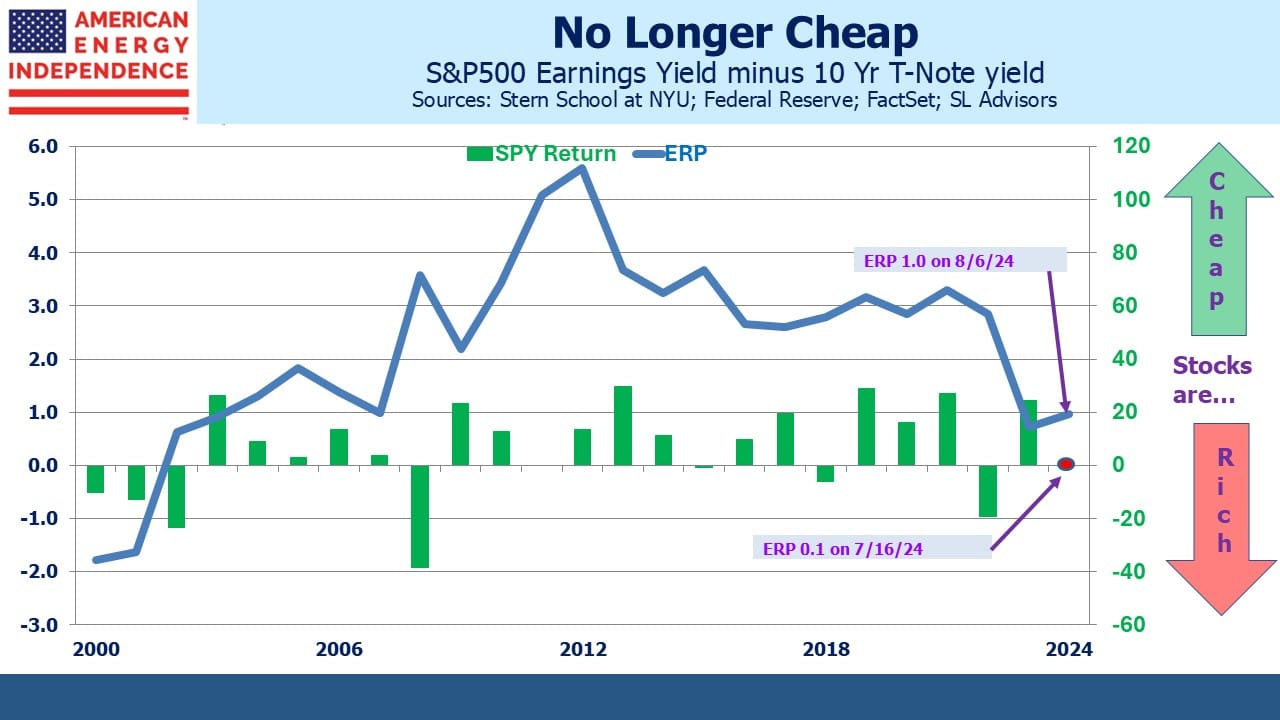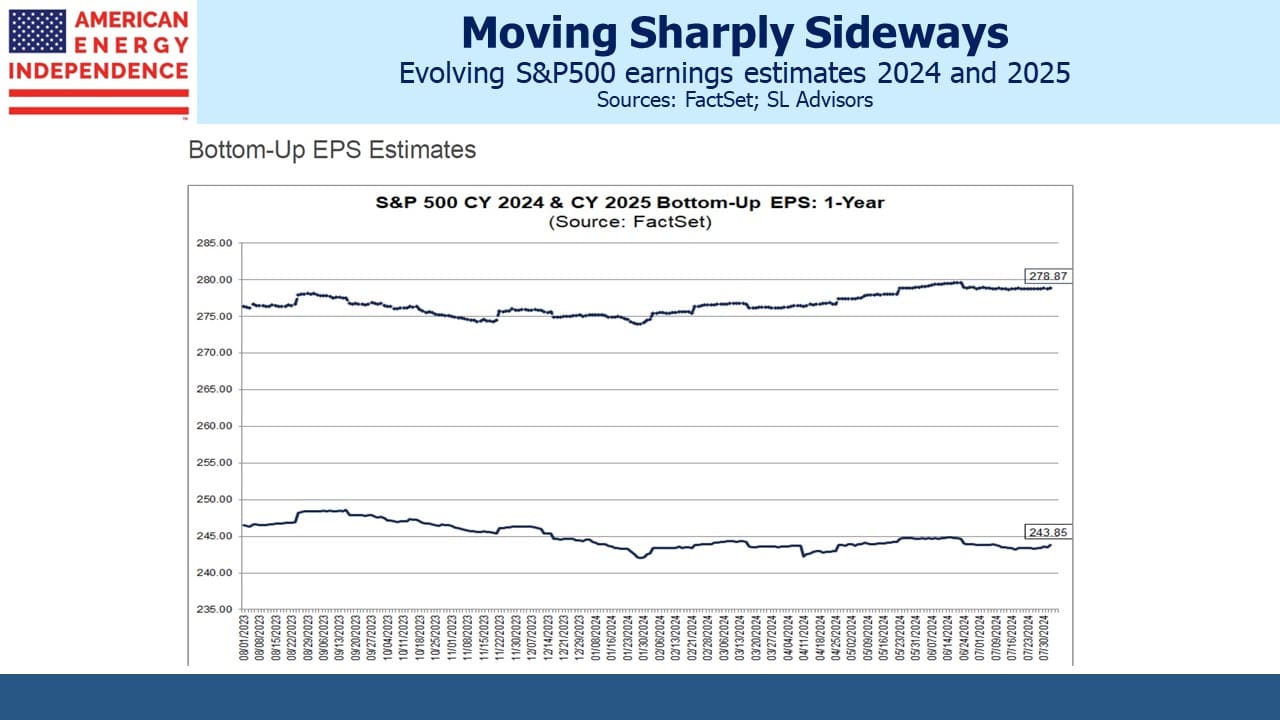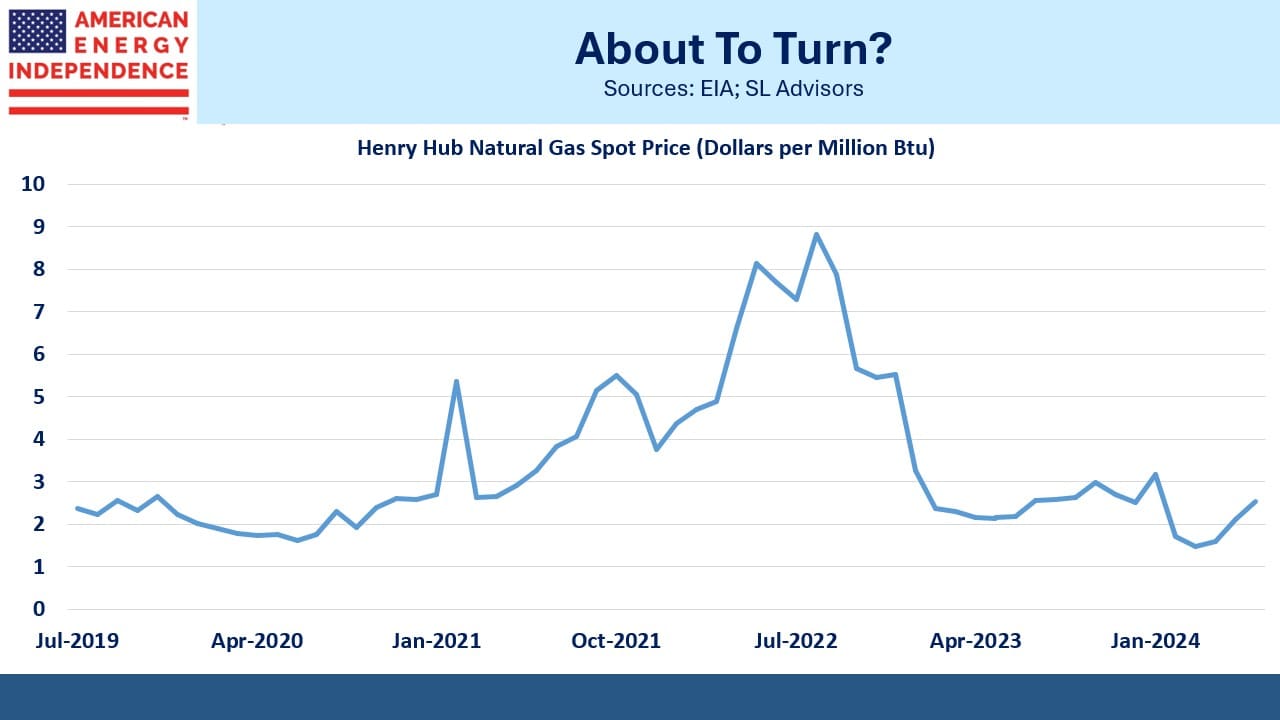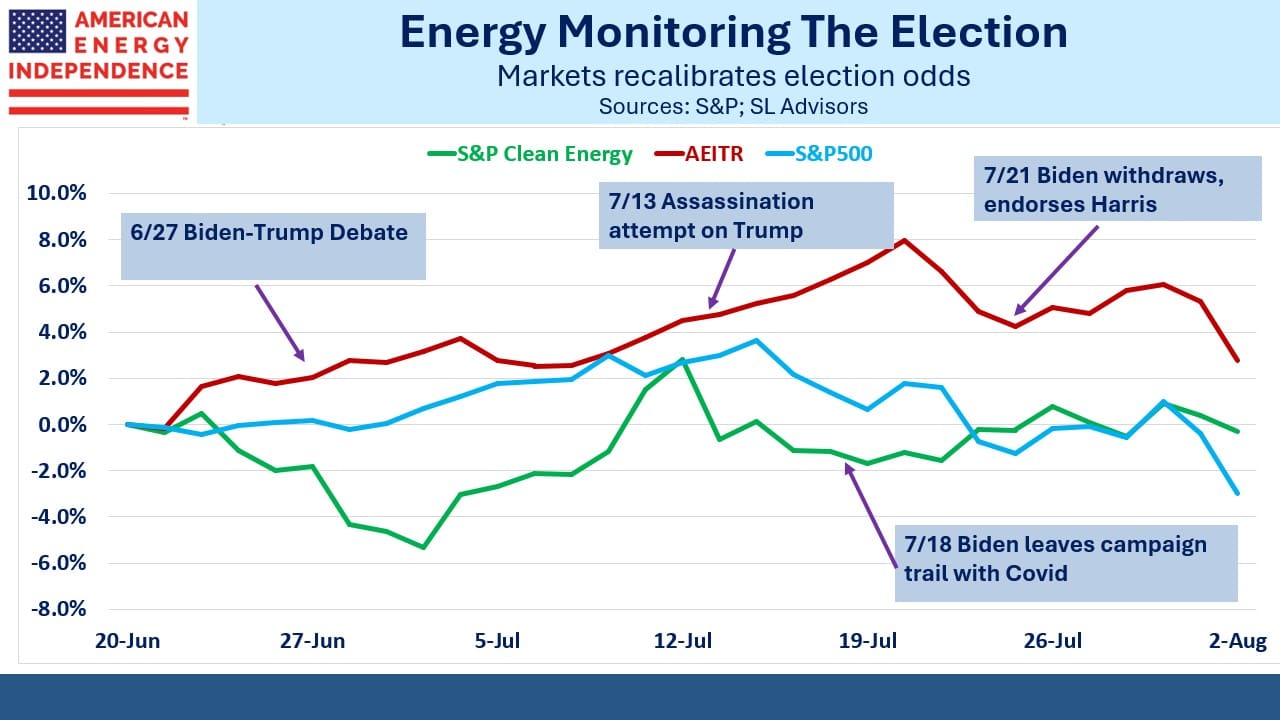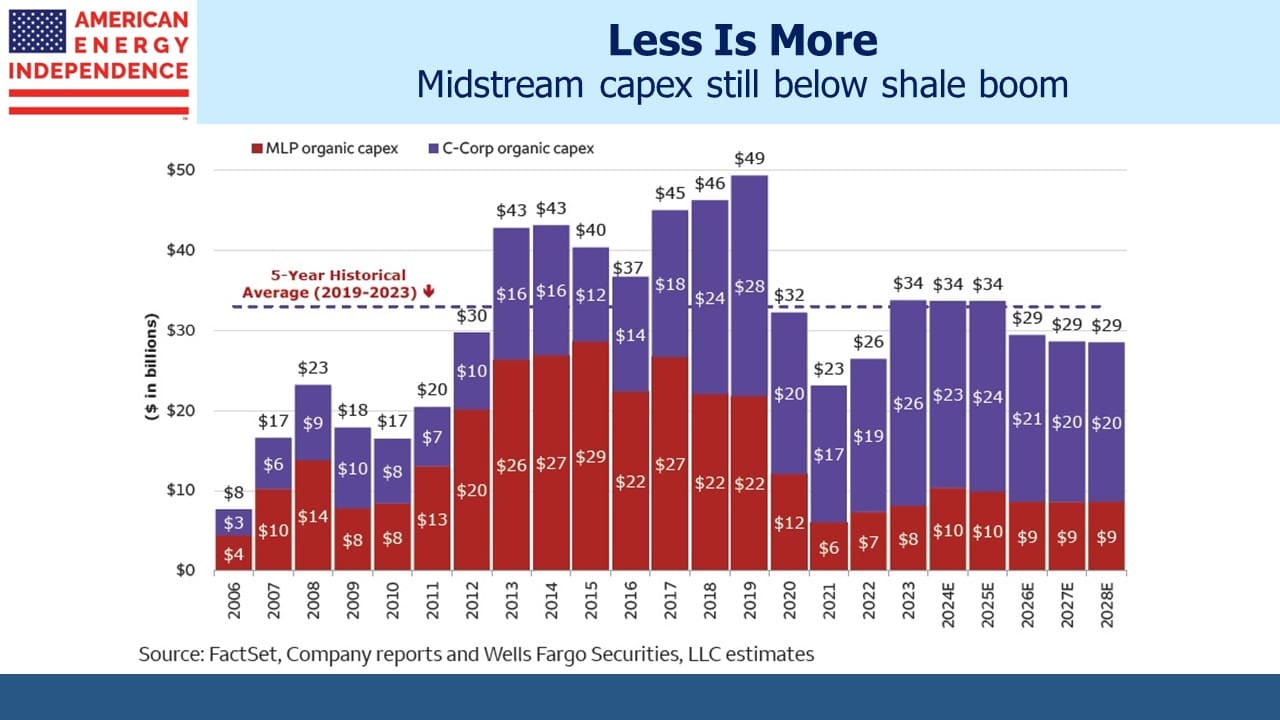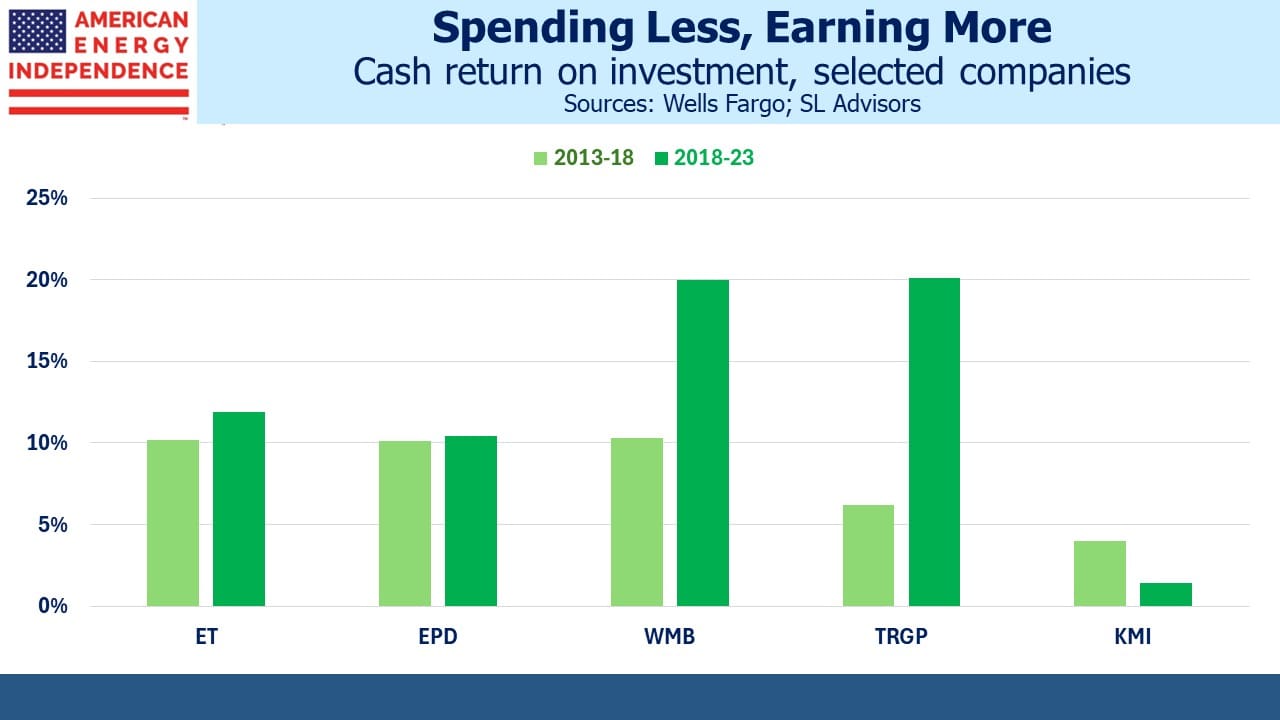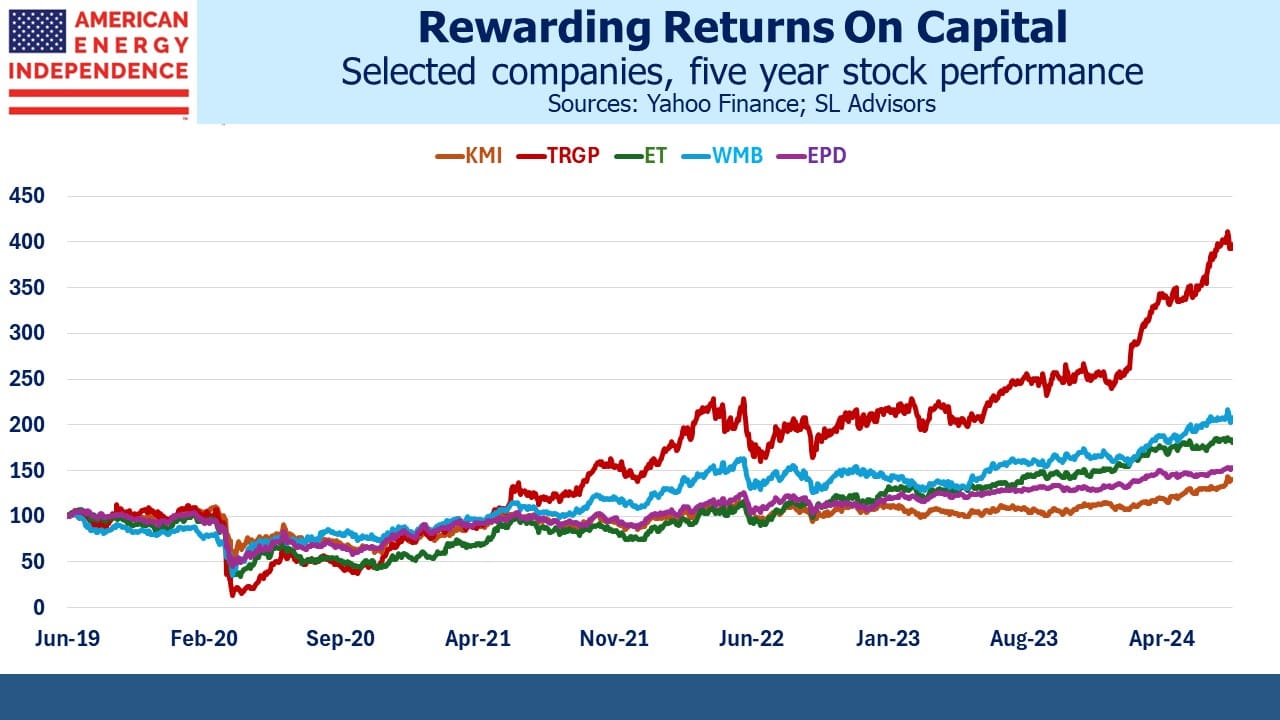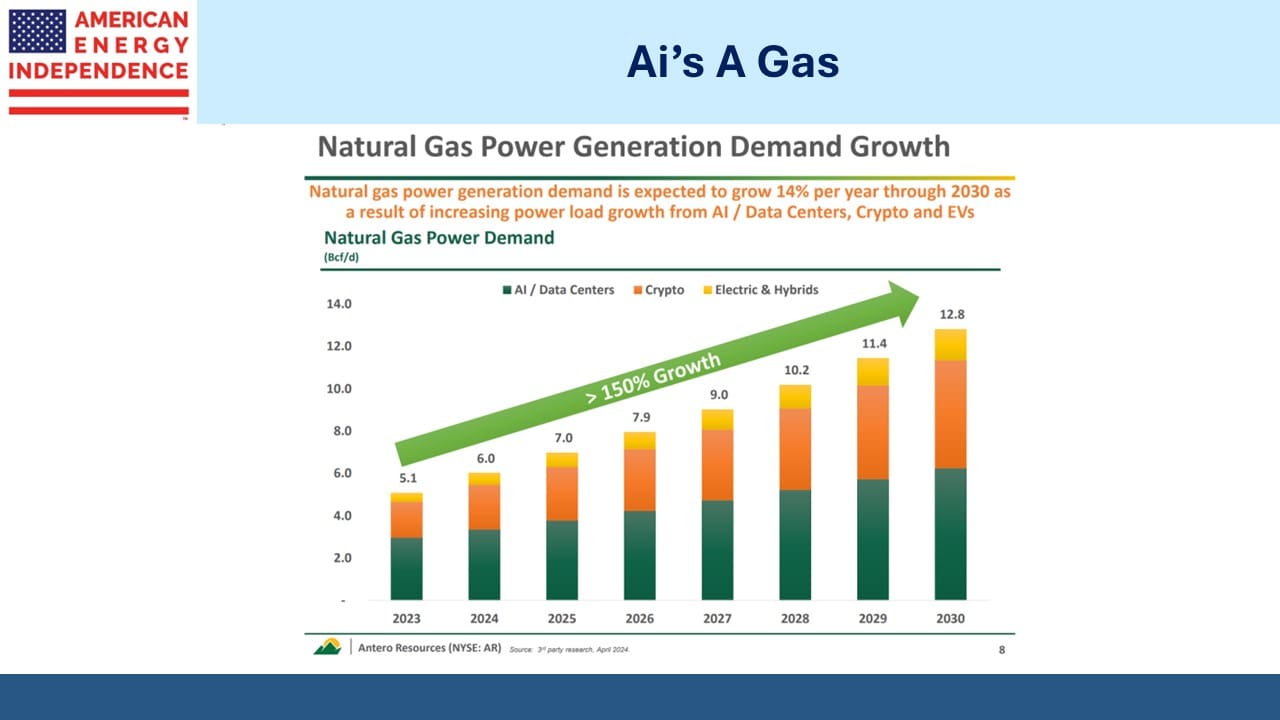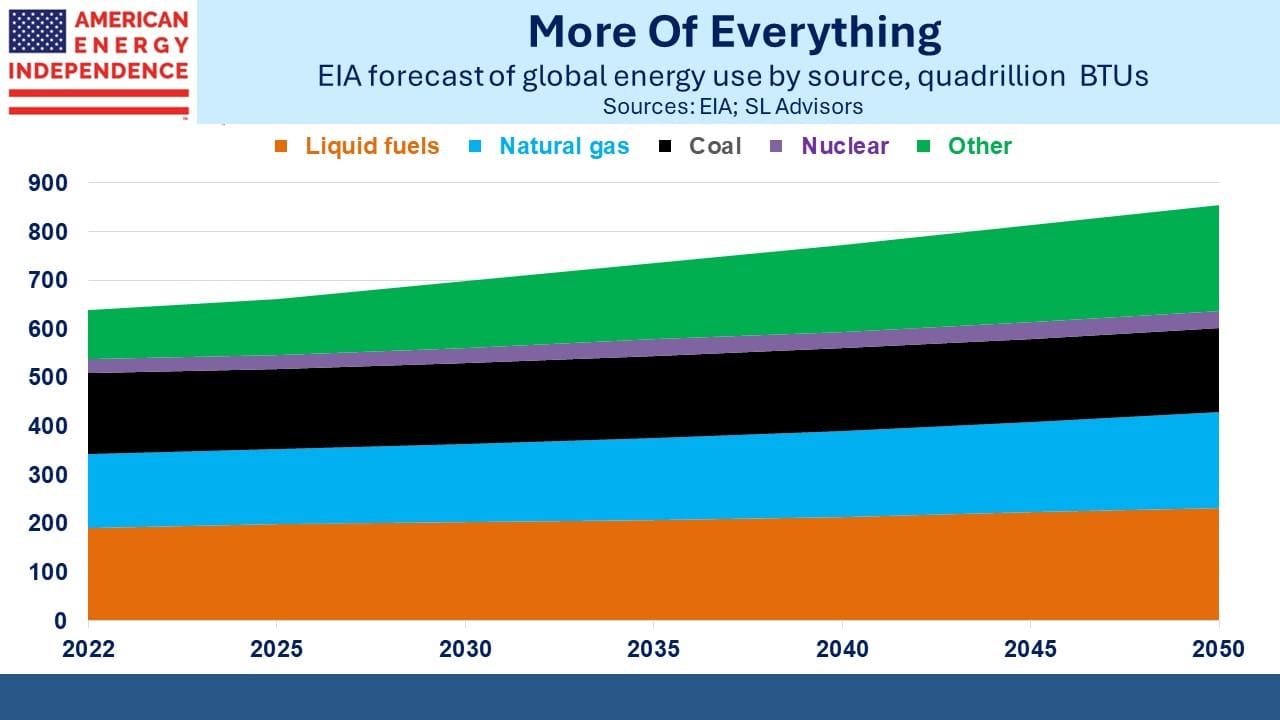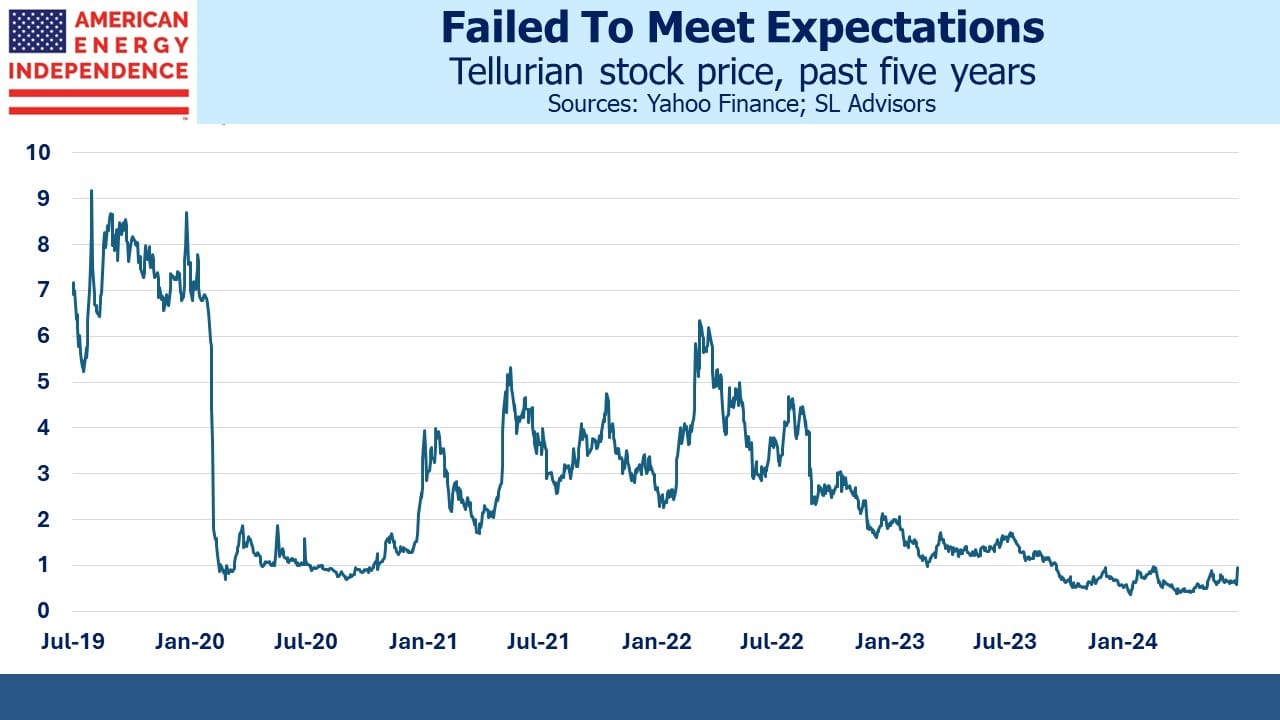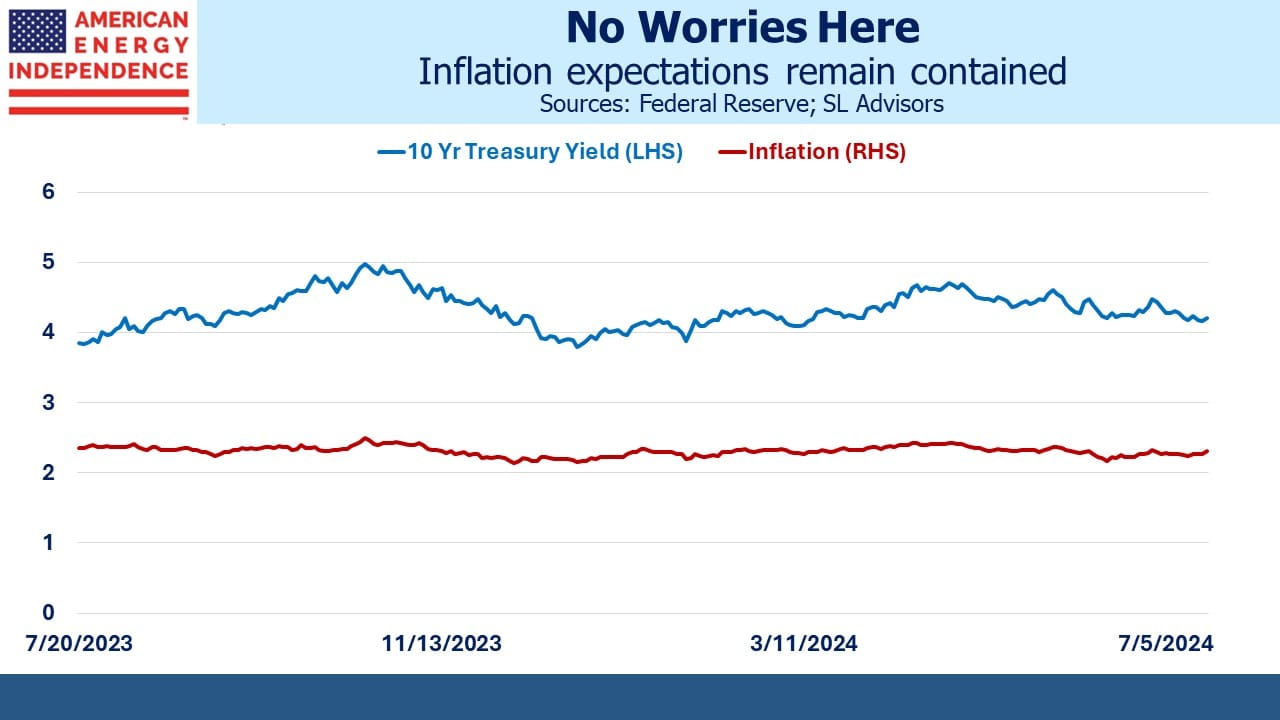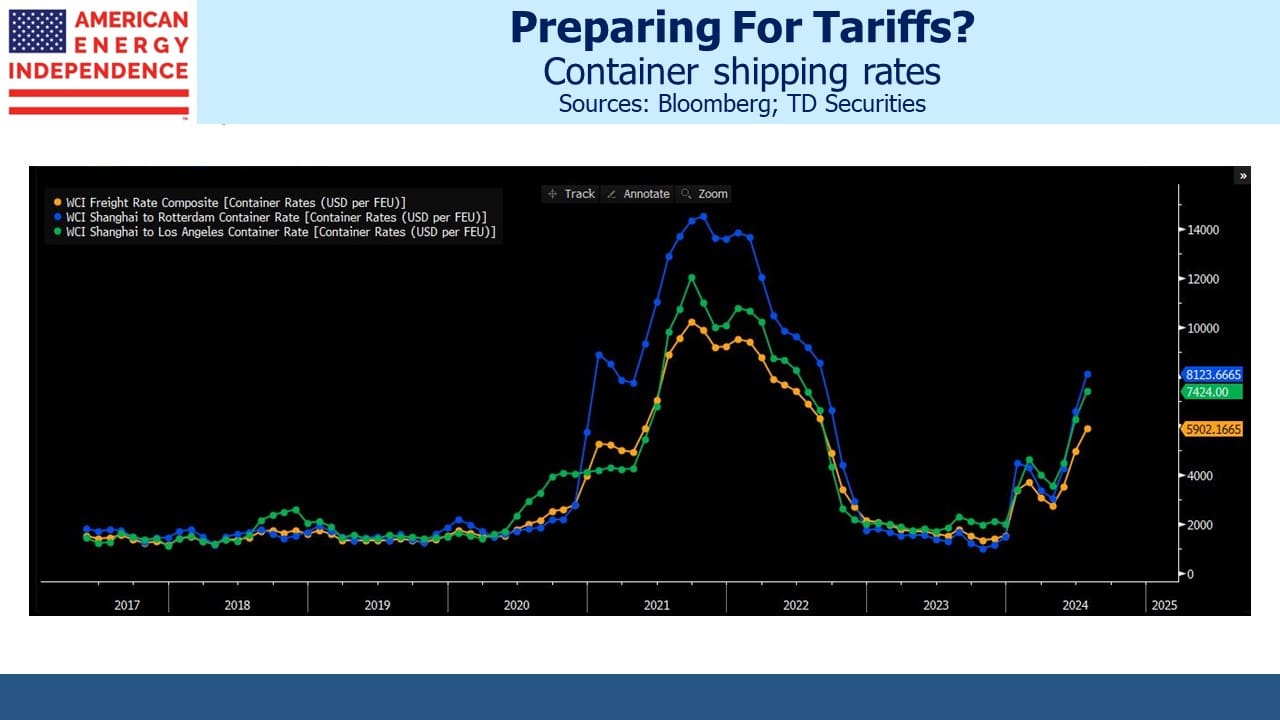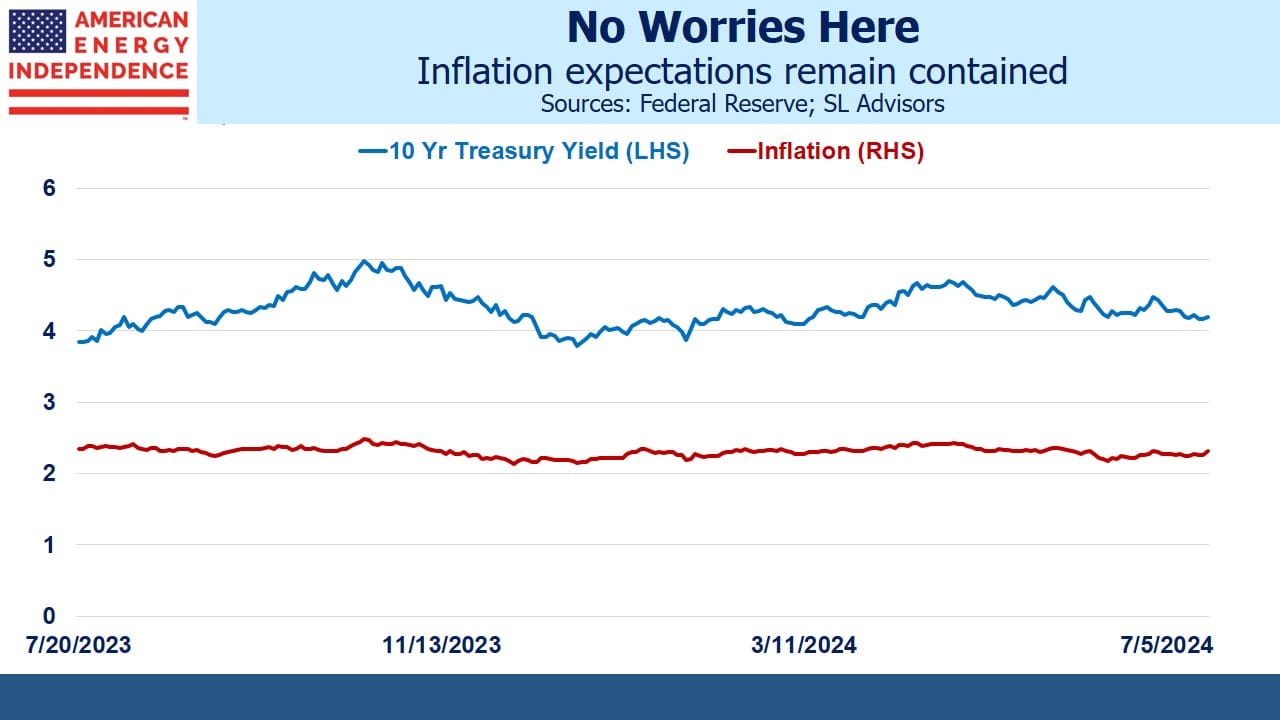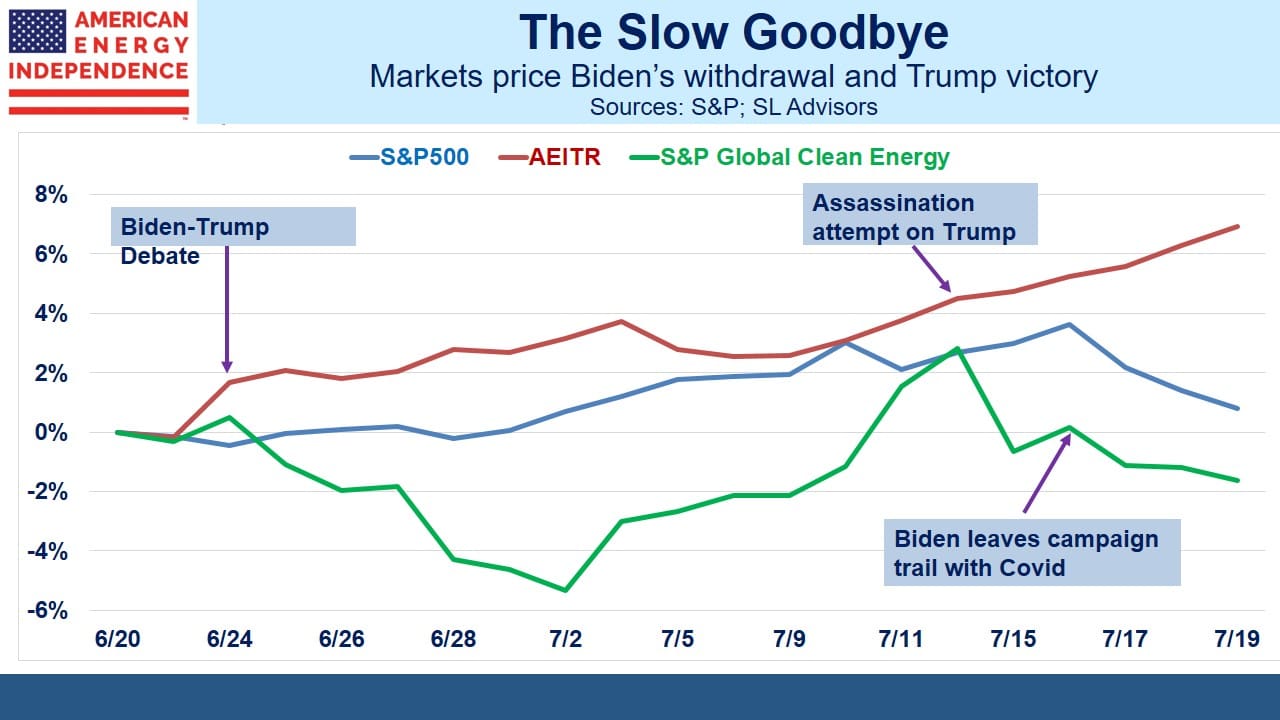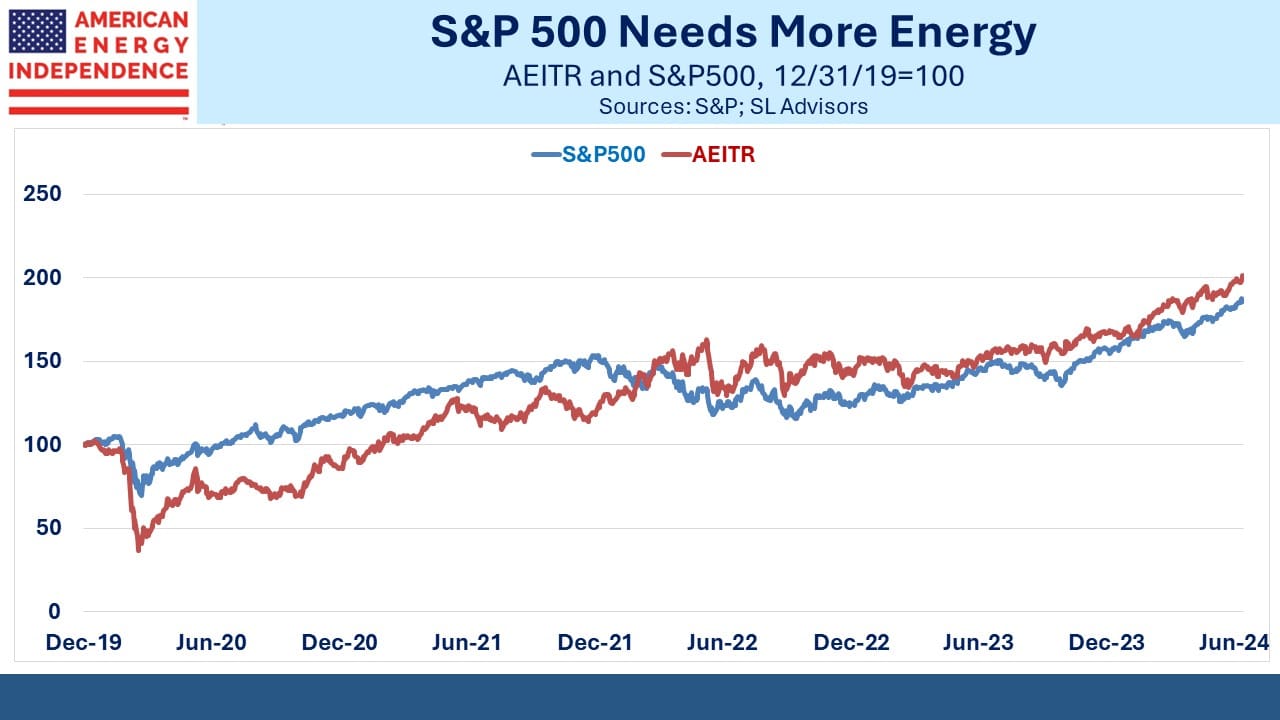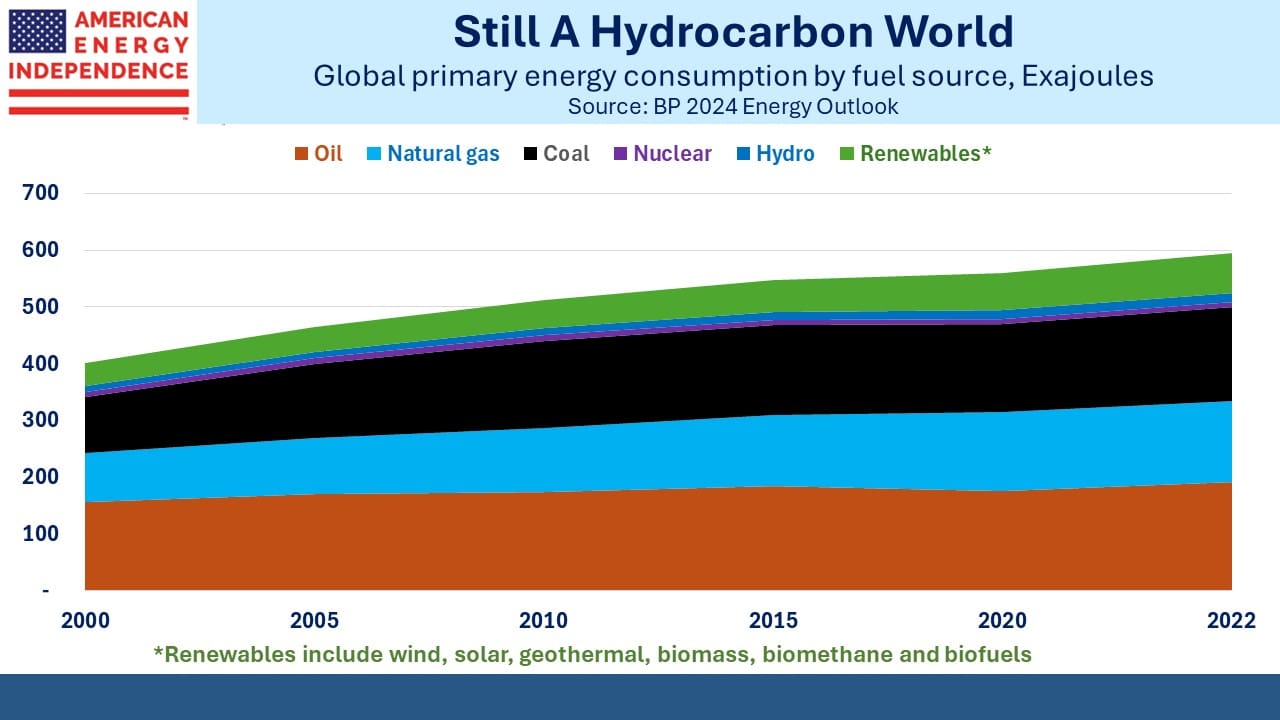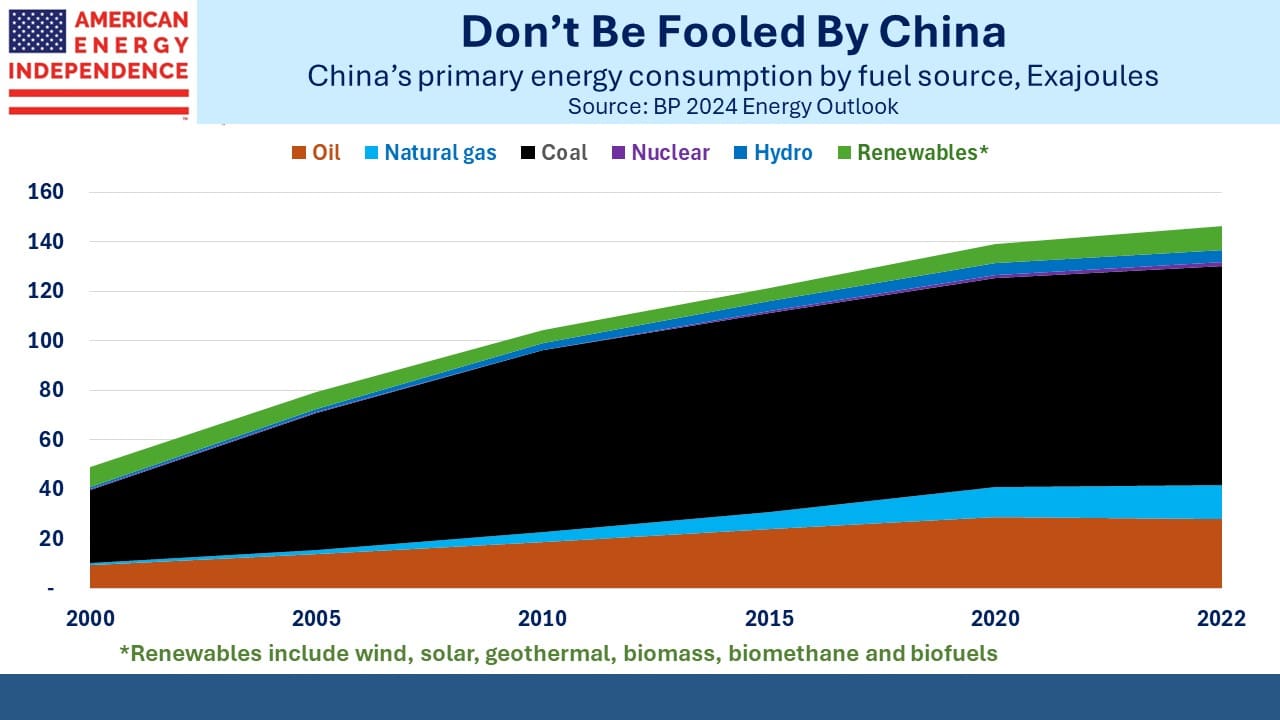Long Term Energy Investors Are Happy

2Q midstream earnings have come in mostly at or ahead of expectations. Oneok had a strong quarter and are expected to raise full year EBITDA guidance in November. Targa Resources also beat analyst estimates and raised full year guidance. Cheniere beat expectations and once again raised full year guidance, something that is becoming a regular occurrence for them.
Evidence of the AI-driven boost to natural gas demand was evident in several reports. JPMorgan now expects data center power needs to increase natural gas demand by 4.6 Billion Cubic Feet per Day (BCF/D) by 2030.
Wells Fargo has looked closely at Enlink and believes that new pipeline capacity for Natural Gas Liquids (NGLs) coming online will allow them to negotiate substantially lower prices for shipping NGLs that their Marketing unit owns. Wells estimates that they could negotiate tariffs 50% lower than at present, adding $112MM of EBITDA (i.e. +17%) by 2028.
I spent some time last week at the annual LPL Focus Conference in San Diego. Two years ago it was held in Denver, and many attendees complained about the walk from the hotel to the convention center which passed by numerous homeless drug addicts and struck many as unsafe. There were apparently some instances of assault and robbery. Next year the conference will once again be in San Diego, and I suspect Denver will no longer be on the circuit.
The area around the San Diego marina where the conference was held is very nice, with a pleasant jogging trail. My Uber driver was a happy Tesla owner and reminded me that by 2035 no regular cars will be available for sale in California. She charges it on a regular 220V circuit every night which takes 10-12 hours. Her house is too old to accommodate higher voltage and the nearest public charging station is, oddly, 30 miles from home. This means after driving the car all day it’s unavailable to go out in the evening. Tesla drivers all seem to explain away the inconveniences they endure.
It’s always a great pleasure to catch up with long-time clients and friends. LPL is a fast-growing firm, and attendance was reported at 9,000. The conference featured several motivational presentations along with senior executives reminding advisors how important they are to the firm’s success.
Advisors on the LPL platform routinely report that they’re happy with the support and the comparative freedom they enjoy to run their businesses as they see fit. You could feel the positive energy, capped with a rousing performance by Lionel Ritchie at the Rady Shell, an outdoor theatre on the San Diego marina. The enthusiastic crowd cheered whenever the singer said the LPL name.
Advisors attending the conference left no doubt convinced that they’re partnered with the best firm in the business and believing they can continue to add clients.
Investor Ida Zhu runs a thriving business in Seattle. As an immigrant myself I always find their stories fascinating, typically full of hard work and ambition. Ida’s was no exception.
Clients of Aaron Irving from Carlsbad, NM have similarly benefitted from his early insights about the pipeline sector. Aaron lives in the Delaware Basin, part of the Permian Shale play, so knows first hand from local friends and clients how the energy business is doing.
Pipeline investors are pleased. Performance has been good for several years. The industry has adopted a parsimonious approach to capex, which is boosting cashflow. Few seem worried about the election. One might think an investor base that is heavily Republican would be dismayed by the improving polling of Kamala Harris. Some attribute it to the honeymoon – the relief that Joe Biden finally acknowledged what everyone else knew.
Others don’t think the party in power will make much difference to returns from energy, which tends to follow a cycle much longer than the four year electoral one. As we’ve noted before, returns under Biden have far exceeded those under Trump. The former is good for cashflow and the latter will make production easier. For many reasons, energy investors are more concerned with the continuation of financial discipline that has prevailed for the past five years than who’s in the White House.
This optimistic outlook is supported by the fundamentals. Data center power demand growth is no longer a forecast, but is making an impact now. Given the lead time needed to add generating capacity, typically 3-5 years according to Goldman Sachs, electricity prices are set to keep rising. Last year they rose 6.2%, outpacing inflation.
The push towards renewables is exacerbating things because solar and windpower lead to more excess capacity. Since these weather-dependent sources typically run 20-35% of the time, more dispatchable power is needed as backup. It lowers the utilization of the whole system. The oft-repeated claim that solar and wind are the cheapest form of energy is at odds with the reality of rising prices as their deployment continues.
Data center demand is also slowing the retirement of coal-burning power plants. This all supports the case for more natural gas. Cost, reliability and coal displacement are among the reasons for JPMorgan’s forecast of 4.6 BCF/D demand growth over the next six years. The outlook for infrastructure supporting reliable energy remains good.
We have three have funds that seek to profit from this environment:
Energy Mutual Fund Energy ETF Real Assets Fund






